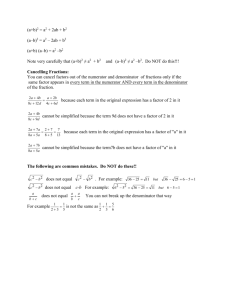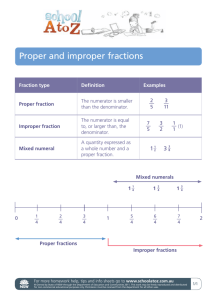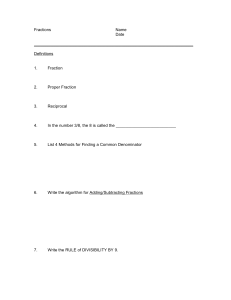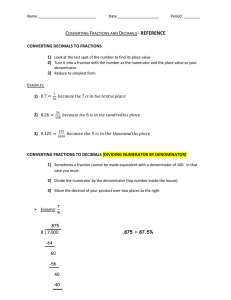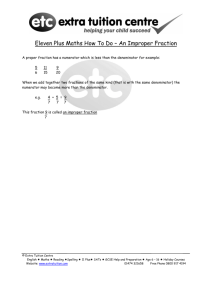Simplifying fractions
advertisement
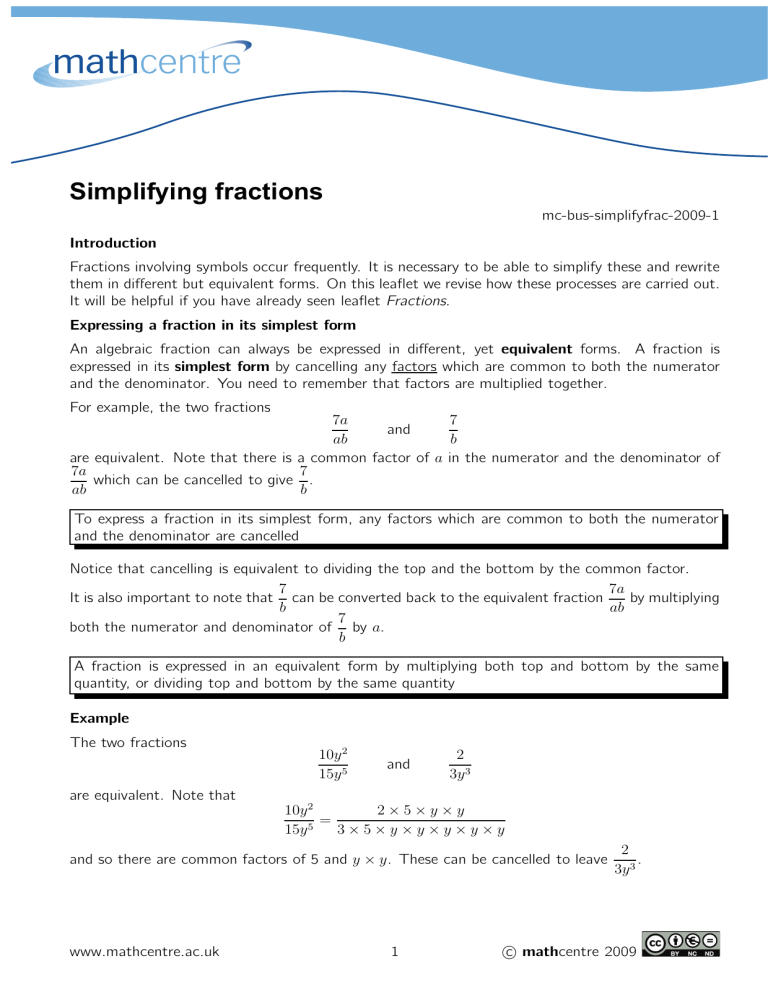
Simplifying fractions mc-bus-simplifyfrac-2009-1 Introduction Fractions involving symbols occur frequently. It is necessary to be able to simplify these and rewrite them in different but equivalent forms. On this leaflet we revise how these processes are carried out. It will be helpful if you have already seen leaflet Fractions. Expressing a fraction in its simplest form An algebraic fraction can always be expressed in different, yet equivalent forms. A fraction is expressed in its simplest form by cancelling any factors which are common to both the numerator and the denominator. You need to remember that factors are multiplied together. For example, the two fractions 7 7a and ab b are equivalent. Note that there is a common factor of a in the numerator and the denominator of 7a 7 which can be cancelled to give . ab b To express a fraction in its simplest form, any factors which are common to both the numerator and the denominator are cancelled Notice that cancelling is equivalent to dividing the top and the bottom by the common factor. 7 7a It is also important to note that can be converted back to the equivalent fraction by multiplying b ab 7 both the numerator and denominator of by a. b A fraction is expressed in an equivalent form by multiplying both top and bottom by the same quantity, or dividing top and bottom by the same quantity Example The two fractions are equivalent. Note that 10y 2 15y 5 and 2 3y 3 2×5×y×y 10y 2 = 5 15y 3×5×y×y×y×y×y and so there are common factors of 5 and y × y. These can be cancelled to leave www.mathcentre.ac.uk 1 2 . 3y 3 c mathcentre 2009 Example The fractions (x − 1)(x + 3) (x + 3)(x + 5) (x − 1) (x + 5) and are equivalent. In the first fraction, the common factor (x + 3) can be cancelled. Example The fractions 2a(3a − b) 7a(a + b) 2(3a − b) 7(a + b) and are equivalent. In the first fraction, the common factor a can be cancelled. Nothing else can be cancelled. Example In the fraction a−b a+b there are no common factors which can be cancelled. Neither a nor b is a factor of the numerator. Neither a nor b is a factor of the denominator. Example 5x as an equivalent fraction with denominator (2x + 1)(x − 7). 2x + 1 Solution Express To achieve the required denominator we must multiply both top and bottom by (x − 7). That is (5x)(x − 7) 5x = 2x + 1 (2x + 1)(x − 7) If we wished, the brackets could now be removed to write the fraction as 5x2 − 35x . 2x2 − 13x − 7 Exercises 1. Express each of the following fractions in its simplest form: a) 12xy , 16x b) 14ab , 21a2 b2 c) 3x2 y , 6x d) 3(x+1) , (x+1)2 e) (x+3)(x+1) , (x+2)(x+3) f) 100x , 45 g) a+b . ab Answers 2 3 1. a) 3y , b) 3ab , c) xy , d) x+1 , e) x+1 , f) 20x , g) cannot be simplified. Whilst both a 4 2 x+2 9 and b are factors of the denominator, neither a nor b is a factor of the numerator. www.mathcentre.ac.uk 2 c mathcentre 2009
